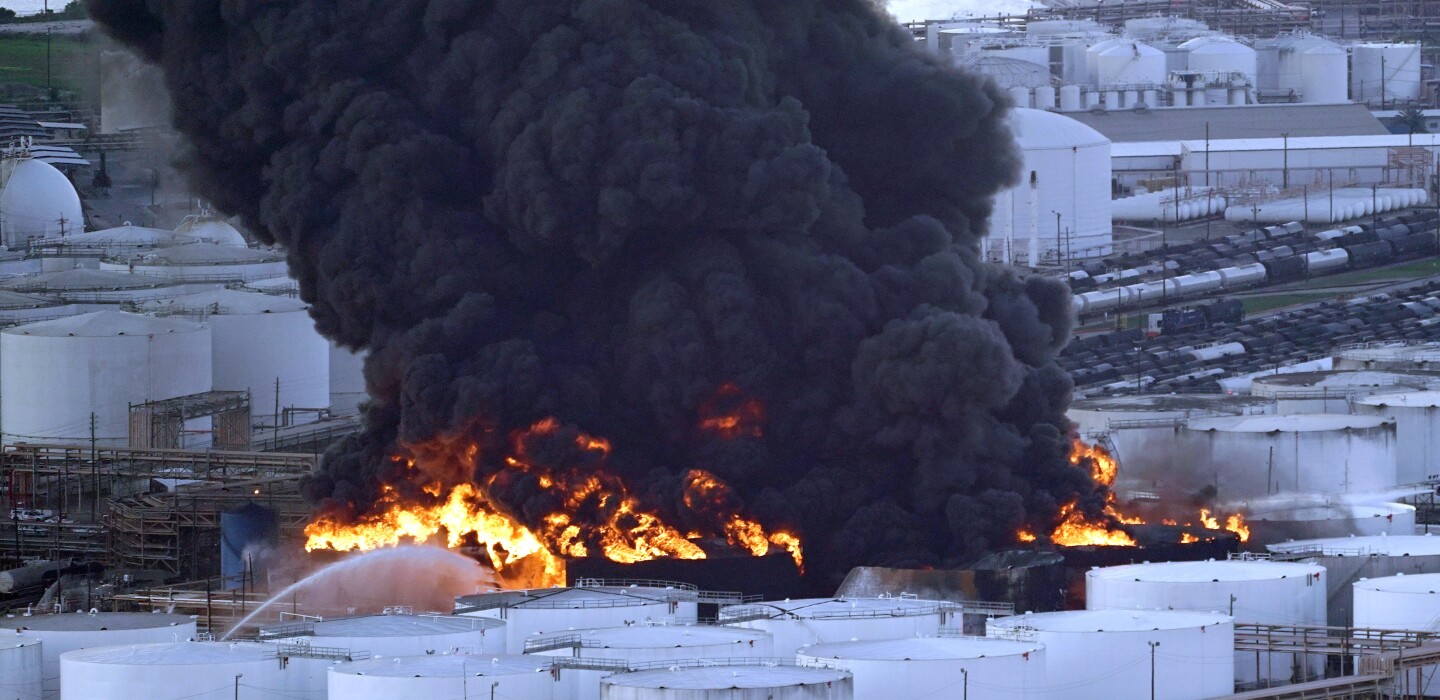
The ITC Fire Burned for Days in Texas. Are we Safer?
(TNS) – It’s been more than four years since a fire at a chemical storage facility in Deer Park burned for three days, sending angry clouds of black smoke across the county, shutting down the Houston Ship Channel and leaving lasting environmental damage.
No one at the facility was killed or injured.
The true toll, however, is harder to quantify. Nearby residents suffered through days of dangerous air quality, even more than officials indicated at the time.
“It was like watching your son drown right in front of you,” one Deer Park parent told the Texas Tribune about the way his 4-year-old struggled to sleep in the aftermath, gasping himself awake trying to breathe.
Days after life seemed to return to normal, cancer-causing benzene emissions spiked in the area, according to a recent investigation from the Tribune and Public Health Watch.
“There is just clear and present danger with some of these facilities and it’s not being addressed in an adequate way,” said Elena Craft, a scientist and associate vice president focusing on climate and health for the Environmental Defense Fund. Craft said the benzene levels were among the highest she’d ever seen.
Are we safer now?
A preliminary investigation identified a general lack of safety measures and equipment at the facility that had been cited by the state’s environmental agency, the Texas Commission on Environmental Quality, several times already. Now, the final report released this month from the federal Chemical Safety and Hazard Investigation Board confirms the entirely preventable nature of the disaster and cites the lax federal regulations that contributed to it.
The particular facility, which housed more than 240 aboveground storage tanks at the time of the fire, has received some $50 million in safety investments, according to the company. The Intercontinental Terminals Company told the Tribune earlier this year that it had added a number of safety upgrades, including more emergency and gas detection equipment.
But the final CSB report shows that more needs to be done to ensure that this never happens again at similar facilities.
State actors have failed to keep Texans safe but Swiss cheese federal standards also helped spark the flame, according to the report. Two agencies, the Environmental Protection Agency and the Occupational Safety and Health Administration, left the door open for important safety exemptions that the facility exploited.
The existing rules require companies to create safety plans for tanks storing flammable liquid, except for the particular type of tank where the leak occurred. The atmospheric storage tank exemption has been an issue for years now, a factor not just in the ITC fire but in other explosions and fires across the country. And yet, there’s been no resolution. In fact, when OSHA cited ITC after the fire, at first it argued the company had violated a rule for storing flammable liquids. But in the settlement, ITC never conceded that point and OSHA removed that language. Had the exemption not applied, ITC would’ve been required to have a much more robust safety planning process.
Last year, during public comment on possible OSHA rule revisions, the federal Chemical Safety Board urged OSHA to take action, noting that the exemption “continues to allow for catastrophic incidents.” Revisions are no doubt technically complicated but crucial for communities like ours. An OSHA representative told the editorial board that CSB’s work was appreciated but there was no timeline yet on when a new, more expansive regulations might be proposed.
Likewise, had an EPA rule that requires safety management systems for facilities handling highly flammable materials applied to the materials being handled at the ITC site, the facility would have been forced to have a better plan in place to mitigate the risks.
Fixing these loopholes is a start — but not the only lesson we must learn from ITC.
Consider, too, that the gas leak at ITC went undetected. Then, without an emergency shut-off valve, the leak continued for roughly 30 minutes. When the vapors caught fire, it spread to nearby tanks. Toxic chemicals filled the air. Local schools shut down. Residents took shelter in their homes. Finally, a containment wall gave way — another failure that sent thousands of gallons of contaminated water into the surrounding waterways, including the Ship Channel, shutting it down too.
Though an effort to launch a class action lawsuit against the facility failed in court last month, the state lawsuit against the facility is approaching a settlement, according to the AG’s office. That settlement could — and should — include additional abatement, on top of what OSHA secured in its earlier settlement with the company.
State environmental regulators, who have been too lenient in the past, should also take full advantage of a new bipartisan law that raised maximum fine amounts. That effort was led by Sen. Charles Schwertner, R- Georgetown, and came after a comprehensive and sharply critical review of the state agency. We’d urge them likewise not to use another troubling new law that makes it easier to dismiss resident complaints.
All levels of government should be taking their responsibility to protect Texans seriously. Without real reform, another toxic fire, another angry smoke plume, is surely on the horizon.
___
©2023 the Houston Chronicle
Distributed by Tribune Content Agency, LLC.


Average Rating